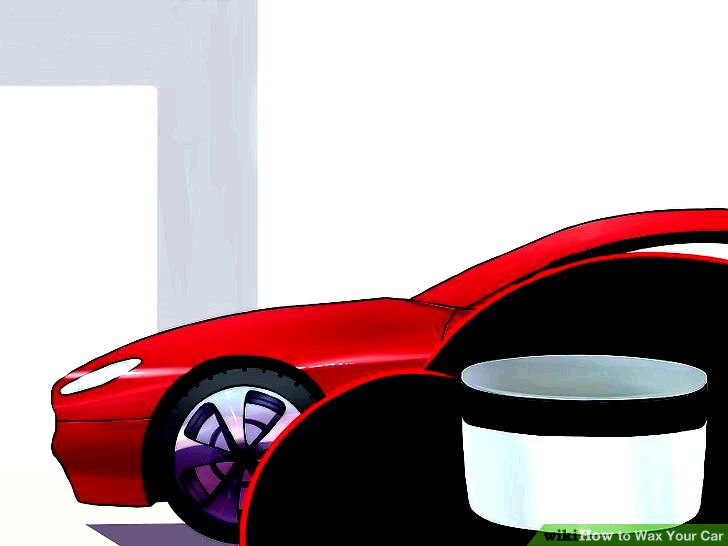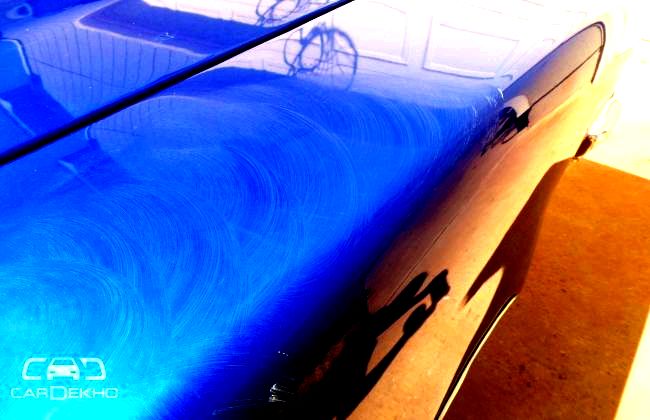Buffing
Use a generous quantity of buffing compound to the heavily weathered or scratched surface. Buffing functions by stripping away an excellent layer of paint and exposing the new paint underneath, and also the compound functions like a paint stripper. Waxing your vehicle soon after buffing will switch the protective qualities from the original obvious coat.
Spread the compound out evenly over the area using the buffing pad (as the buffer isn’t moving) to make sure that the compound does not splatter onto adjacent surfaces. Don’t get the compound on chrome, rubber, or glass.
Turn the buffer on and work the region in circular motions, holding the information completely flat whatsoever occasions. Turning the buffer in an position or applying an excessive amount of pressure burns up the paint surface and cause swirling. Work a quarter of the panel at any given time until you receive a vibrant gloss. The top should feel smooth and appear new.

When the paint is within good shape and needs only a few freshening up, stick to the same method as above, but use vehicle polish rather of buffing compound. You will not need just as much polish while you would buffing compound because polish can cover a larger area and can remove less paint. Stick to the process over the entire top of the vehicle before the paint is restored.
Buffing should usually be achieved annually. In case your vehicle is kept in a garage and it is paint is within good shape, only use polish as opposed to a compound. If you reside in a seaside region as well as your vehicle is stored outdoors, it might want more frequent buffing. It’s because our prime salt content of ocean air, which in turn causes paint to oxidize quicker than it might within an arid climate. Cars parked under trees will typically be covered in tree sap and bird waste, which could also damage paint. Your vehicle could require buffing 2 or 3 occasions annually during these conditions.
Waxing
Apply vehicle wax utilizing a clean buffer pad. Spread it evenly, lightly pulsing the trigger from the buffer (rather of maintaining your buffer switched on continuously). This can be sure that the wax does not cake at first glance. Cover one-quarter from the panel at any given time before taking out the wax. Some waxes will need a collection time before removal, so make reference to the directions around the bottle. Make use of a microfiber cloth to get rid of the wax, using circular motions to attain a higher gloss.
Do this again over the entire top of the paint.
Since it is generally suggested that you simply wax your vehicle every three several weeks (try not to buff any time you wax), vehicle waxing is a great skill to possess. Your vehicle will appear great, as well as your wallet will thanks.
 Resourse: http://popularmechanics.com/cars/how-to/a10646/how-to-wax-your-vehicle-16878051/
Resourse: http://popularmechanics.com/cars/how-to/a10646/how-to-wax-your-vehicle-16878051/
How to Polish Your Car
COMMENTS:
Choop: Best video by far. Thank you sir.
milanmastracci: No problem :)
Aaron Mattheus: What do I do when my balls are too small to rub my car with sanding paper?
Max ettel: As a detailer, I would never recomend beginners to get a use of sanding paper. At least do a workshop to get the basics. \nStarting with 8-15mm throw DAs is not a big deal. And you wont be able to damage anything, even if you do lot of misstakes.
fwh79: Stop by a few local body shops and ask them if you can have an body old part they are throwing away (old fender or hood). Tell them that you are trying to learn how to buff and need a part to try it out on. Most shops would be happy to help you out. Learn how to sand and buff on the old part.
Tray Muse: first step, polish car to mirror.\nstep two, cover in Plasti dip
Gaston Cortez: before step one he need replace his rocker panels
ricardo ayala: Colin Ward j
Fardan Al-Quraishi: skip to 5:21
MaxiiBoii: Fardan Al-Quraishi No thanks…
GSHeverything _27: Fardan Al-Quraishi Thanks
Jonathan Ritter: this guy doesn't 100% know what he's talking about. I would never sand an entire car with sand paper. that's what cutting compound and polish is for
Peacey: Juan Bailon that's to remove orange peel, runs and any impurities after it gets out of the booth. If you sand a whole car you're wasting your time. Typically a 300-400grit compound will do just fine for most scratches, while wet sanding is only for special circumstance scratches
nateyzf: I fail to see why the sanding is necessary in this case. Why wouldn't the M105 handle the damage?
Harry Marshall: Yes as the whole purpose of doing so is to remove clearcoat. Do it too much and you risk removing it entirely. A paint depth guage would help, but for the average user, sanding is not really necessary. A good cutting pad and cutting compound would suffice, but this Golf's paint looks pretty old and bad. Just my opinion.
ricardo ayala: Harry Marshall \n K
HitmanAtM16: You forgot one crucial step. After polishing always use a polish remover, such as an IPA mix (1 part isopropyl alcohol and 1 part water). Some other products you can use are CarPro Eraser and Griots Pre Wax Cleaner. This crucial step ensures that any polishing residue is off of the paint, and so when you go to apply sealant or wax, it can bond much better to the paint and last a lot longer and provide more hydrophobicity. Nonetheless, great and clear video. Im loving your channel, cheers.
Matt Weber: Incredible.\n\nNow… How do I hire you to do my car?
Nolan Ouellette: you should do another series similar to this where you flip a car for as much profit as you can
Johan Bermudez: Nolan Ouellette ?????
